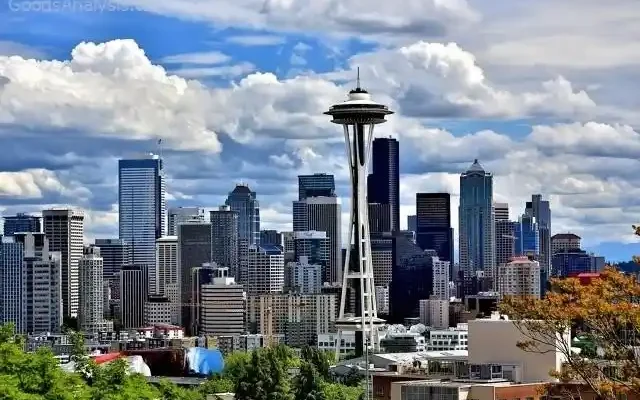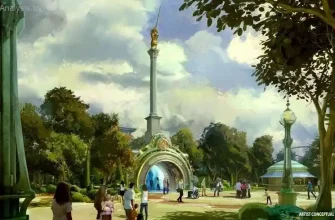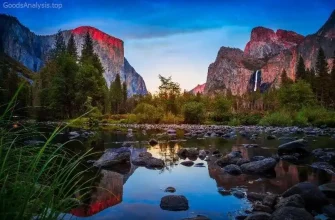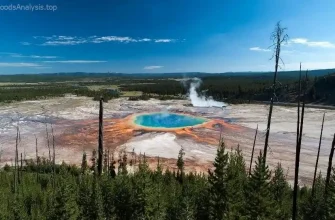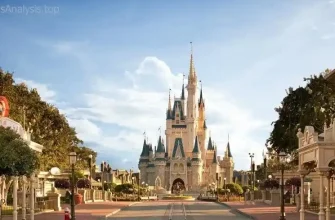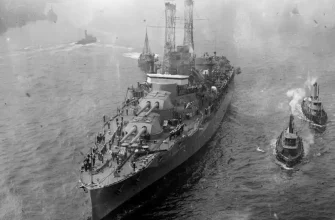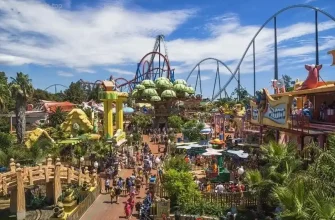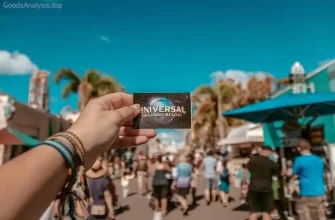Introduction to the Space Needle: An Icon of Seattle
The Space Needle is more than just a towering structure in Seattle—it’s an iconic piece of American architecture and one of the most recognizable landmarks in the Pacific Northwest. Standing at 605 feet (184 meters) tall, the Space Needle was built for the 1962 World’s Fair and has since become a symbol of Seattle’s innovation, modernity, and forward-thinking spirit. With sweeping panoramic views, an exciting history, and unique experiences, the Space Needle promises a visit full of awe and wonder.
1. What Makes the Space Needle Special?
The Space Needle stands as a beacon of Seattle’s skyline, offering an unparalleled 360-degree view of the city and its surrounding natural beauty, including the Puget Sound, Mount Rainier, and the Olympic Mountains. As the city’s most famous tourist attraction, the Space Needle blends architectural ingenuity with extraordinary views, making it a must-see for any traveler.
- The Observation Deck: The observation deck is located 520 feet above the city, providing one of the best vantage points in Seattle. Visitors can enjoy a clear view of the bustling downtown, Elliott Bay, and beyond. On a clear day, you can even spot Mount Rainier looming majestically in the distance.
- The Glass Floor: One of the most popular features of the Space Needle is the glass floor in the observation deck, allowing you to look straight down and see the city far below. It’s an exhilarating experience and a great spot for photos.
- The Revolving Restaurant: The Space Needle’s Sky City Restaurant offers a fine dining experience with views that change as the restaurant slowly revolves 360 degrees every 47 minutes. This is an exceptional way to appreciate the stunning landscape of Seattle from above.
- Interactive Exhibits: For a deeper understanding of Seattle’s culture and history, the Space Needle includes various interactive exhibits that tell the story of its construction, design, and cultural significance. Visitors can also learn about the city’s rapid transformation from a small town to a modern metropolis.
2. Visitor Tips & Practical Information
- Best Time to Visit: The Space Needle can be visited year-round, but the best time to go is during Seattle’s dry summer months (July to September), when the views are crystal clear. However, if you’re looking to avoid the crowds, spring and fall are great alternatives, though weather conditions can vary.
- Opening Hours: The Space Needle is generally open daily from 9 AM to 11 PM, but these hours may vary depending on the season. It’s always a good idea to check the official website for any changes or special events.
- Ticket Prices: As of 2024, general admission tickets for adults (ages 13-64) cost around $40, with discounts for children (ages 5-12) and seniors (65+). There are also VIP passes for skipping the line or for access to additional experiences like the rotating restaurant.
- Accessibility: The Space Needle is fully accessible to visitors with disabilities, with elevators, ramps, and other accommodations in place. Wheelchairs are available upon request, and the observation deck can be easily accessed by all visitors.
- Special Events & Private Tours: The Space Needle offers a variety of unique experiences, including private tours, after-hours access, and special events. Whether it’s a sunset tour or a seasonal celebration, there are plenty of ways to enhance your visit.
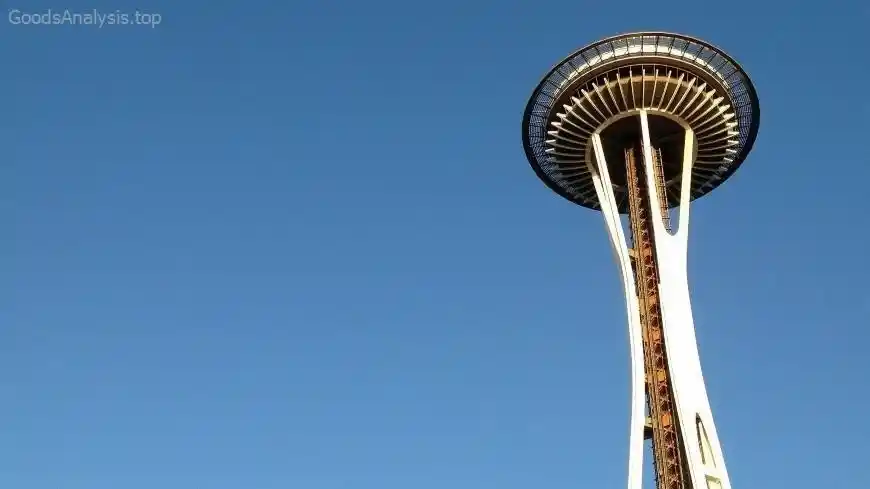
3. History and Cultural Significance
The Space Needle was designed by architect John Graham and structural engineer Arthur A. Loveless, with inspiration drawn from futuristic visions of a utopian city. Constructed in 1961 and completed in time for the 1962 Seattle World’s Fair, the Space Needle was envisioned as a symbol of the future and innovation.
- A Symbol of the 1962 World’s Fair: The Space Needle was the centerpiece of the fair, which had the theme “Century 21 Exposition,” reflecting a vision of progress, technology, and the future. The fair brought nearly 10 million visitors to Seattle, and the Space Needle quickly became the symbol of Seattle’s optimistic outlook.
- Historical Design and Architecture: At the time of its construction, the Space Needle was the tallest structure west of the Mississippi River. Its unique design, featuring a narrow, tower-like base with a wide, saucer-shaped top, was intended to withstand high winds and earthquakes—something Seattle is prone to.
- Pop Culture Icon: Over the years, the Space Needle has made appearances in countless films, television shows, and advertisements, solidifying its place in global pop culture. It’s often used to represent Seattle, and even Washington state as a whole, in media.
4. What to Expect When You Visit the Space Needle
Upon entering the Space Needle complex, visitors are greeted with a modern and welcoming atmosphere. The Space Needle has gone through several updates and renovations over the years, including a complete overhaul of its observation deck in 2018 to incorporate floor-to-ceiling glass windows and a rotating glass floor.
- The Elevator Ride: The elevator ride to the top is an experience in itself, taking just 41 seconds to ascend 520 feet to the observation deck. Along the way, visitors can enjoy a short video presentation about Seattle’s history and the construction of the Space Needle.
- Panoramic Views: Once at the top, the view is nothing short of breathtaking. On clear days, you can see up to 100 miles in every direction. The view of Mount Rainier is particularly stunning, with its snow-capped peak rising majestically in the distance.
- The Glass Floor: For those looking to take their experience to the next level, the glass floor is one of the most thrilling features. Standing above the city with a clear view to the ground below adds a sense of vertigo, while also offering a unique perspective on the city’s layout.
- Sky City Restaurant: If you’re looking to enjoy a meal with a view, the revolving Sky City Restaurant is a must-visit. Whether for a romantic dinner or a special celebration, dining while the restaurant slowly revolves gives you a 360-degree view of the city as it changes with every turn.
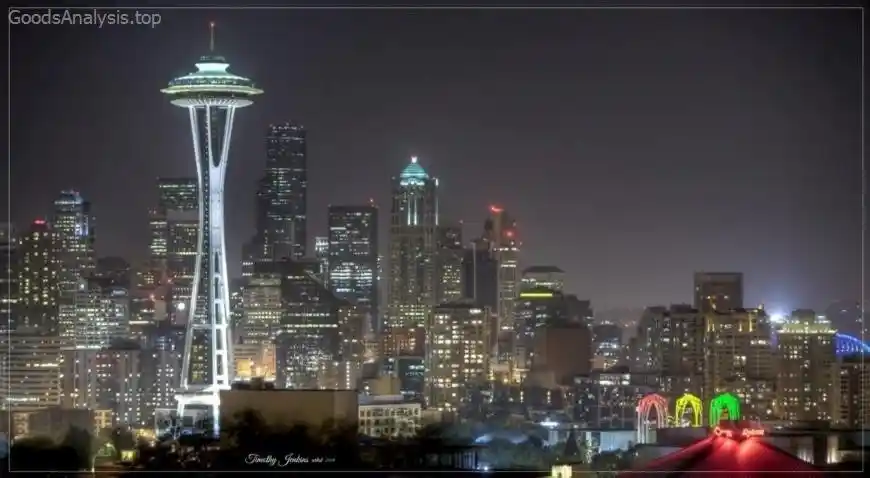
5. Nearby Attractions and Dining Options
The Space Needle is located in the heart of Seattle, and there are plenty of other attractions within walking distance.
- Chihuly Garden and Glass: Just adjacent to the Space Needle is the Chihuly Garden and Glass Museum, which showcases the work of renowned artist Dale Chihuly. The museum is a stunning display of glass art, and the outdoor garden features glass sculptures that are perfect for photo opportunities.
- Seattle Center: The Space Needle is part of the Seattle Center, a large public park that also features the Museum of Pop Culture (MoPOP), the Pacific Science Center, and the International Fountain. It’s a great area for families to explore and spend the day.
- Pike Place Market: A short drive or bus ride away, Pike Place Market is one of Seattle’s most famous attractions. From fresh seafood and artisanal goods to street performances and local history, the market is an unmissable stop.
- Dining Options:
- Sky City Restaurant (at the Space Needle) offers upscale dining with incredible views.
- Tilikum Place Café serves Pacific Northwest cuisine in a charming, cozy setting.
- Bacco Café offers Mediterranean-inspired dishes just a short walk away from the Space Needle.
6. Family-Friendly and Group Travel Tips
The Space Needle is a great place for families and groups to visit together. Here are a few tips:
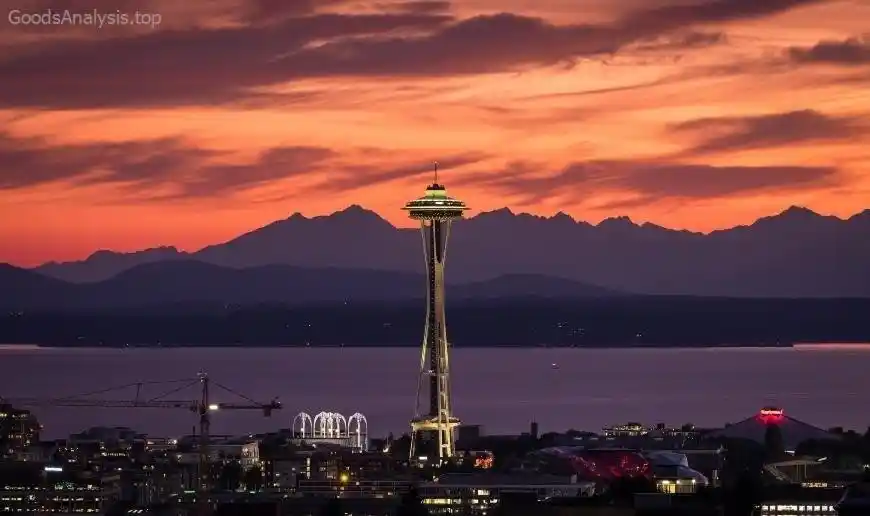
- Families with Children: Kids will love the glass floor and the observation deck, which offers a unique perspective of Seattle. The Space Needle is also a great starting point for exploring the surrounding area, including the Pacific Science Center and Chihuly Garden.
- Group Travel: The Space Needle can accommodate large groups, especially if booked in advance. Consider booking a private tour or using VIP passes for a more seamless experience.
7. Instagrammable Moments and Photo Opportunities
The Space Needle is a photographer’s dream, with plenty of opportunities for great shots:
- The Glass Floor: Capture the thrill of standing over the city below with a shot of the glass floor.
- Skyline Views: Whether you’re looking out at the Puget Sound or getting a close-up shot of Mount Rainier, the observation deck offers fantastic photo ops.
- Chihuly Garden: The vibrant glass sculptures and flowers in the adjacent garden create a beautiful backdrop for photos.
8. Travel Tips and Transportation
- Getting There: The Space Needle is located at 400 Broad Street, Seattle, WA, near the Seattle Center. If you’re coming from downtown Seattle, the Space Needle is about a 10-15 minute walk or a short bus ride away.
- Public Transportation: Seattle’s extensive bus and light rail systems can easily take you to the Space Needle. The nearest light rail station is at Westlake Center, just a few blocks away.
- Parking: If you’re driving, there is parking available at the Space Needle, but it can be expensive. Consider using public transportation or ridesharing services like Uber or Lyft.
9. Safety and Etiquette Tips
- Stay Safe: Although the Space Needle is safe, it’s always important to be mindful of your surroundings. Avoid leaning over railings or engaging in risky behavior near the glass floors.
- Respect the Space: Remember that the Space Needle is a public attraction, so be considerate of other visitors. Keep noise levels down and be respectful of others’ space, especially in the elevator and on the observation deck.

